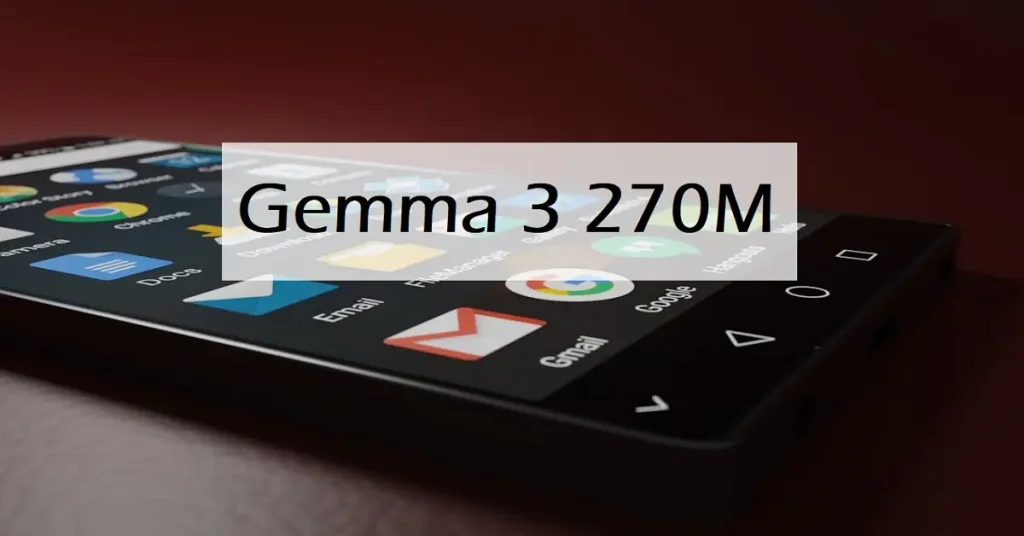Google’s new Gemma 3 270M AI model delivers 2 K-quality fine-tuning for free on mobile or desktop—perfect for indie devs who want custom AI without cloud costs.
Imagine an AI model that weighs less than a Spotify playlist, sips battery like a calculator, yet can be trained overnight to speak fluent “your-company-jargon.” That’s exactly what Google just shipped in March 2025 under the radar: Gemma 3 270M, a 270-million-parameter Swiss-army knife designed for lightning-fast, hyper-cheap fine-tuning.
No cloud bills, no 24-hour training marathons—just plug, prompt, and profit. Here’s why hobbyists, indie devs, and even product managers are suddenly bookmarking Hugging Face links at 2 a.m.
Why the 270M Hype in 2025?
Most “small” models compromise: they’re either too dumb for real work or still too chunky for phones. Gemma 3 270M breaks the pattern. It inherits the same transformer backbone as its 27-billion-parameter big brother, but Google distilled the smarts into a package small enough to run locally on a Pixel 9 Pro—while using less than 1 % battery per 25-turn chat, according to internal benchmarks.
Translation: you can now carry a custom product-classifier, medical-note summarizer, or meme-caption generator in your pocket without pinging an API.
The “Right Tool for the Job” Philosophy
Think of Gemma 3 270M like a cordless drill instead of a bulldozer. You wouldn’t rent heavy machinery to hang a picture frame; likewise, you don’t need a trillion-parameter monster to classify support tickets. Google’s pitch is simple: start with this featherweight base, feed it a tiny dataset (think 10–20 labeled examples), and end up with a specialist that beats generic giants on its narrow task.
Real-world proof? South-Korean telco SK Telecom fine-tuned Gemma 3 4B (one size up) for multilingual customer care and outperformed their older, heavier model. The 270M variant is engineered to repeat that win for everyone, from solo founders to indie game studios.
Quick-Start Walk-Through
Step 1: Grab the model. Head to Hugging Face, accept Google’s open license (takes 30 seconds), and download the 240 MB INT4 checkpoint. Yes, 240 MB—smaller than most mobile games.
Step 2: Fire up a notebook. With transformers and trl installed, a single SFTTrainer line can fine-tune on a CSV of support tickets in under 20 minutes on a free Colab T4 GPU.
Step 3: Ship it. Export to GGUF, drop the file into LM Studio or a Flutter app, and you’ve got offline AI on-device. No cloud latency, no per-query fees.
What You Gain (and What You Don’t)
Pros:
- Ultra-low cost. Fine-tune for pennies instead of dollars.
- Privacy by default. Data never leaves the phone or laptop.
- Speed. Inference clocks at ~60 tokens/sec on an M2 MacBook Air.
Cons:
- Not a general chatbot—forget long philosophical debates.
- It still hallucinates if you skip data cleaning.
Pro tip: use a tiny validation set (5 % of data) to catch overfitting early. The model is so small it tends to memorize fast.
Real-World Mini Case
Picture a Shopify merchant drowning in “Where’s my order?” emails. Instead of paying $0.002 per ticket to GPT-4, she fine-tunes Gemma 3 270M on 200 past tickets. Result: a 97 % accuracy classifier that tags incoming messages in milliseconds, runs on a $5 Raspberry Pi Zero 2, and costs exactly $0 after deployment.
Should You Jump In?
If the plan is to build a narrow, high-value AI feature—think invoice OCR, tone checker, or NPC dialogue—Gemma 3 270M is the cheat code of 2025. Bigger dreams? Chain it with retrieval or graduate to the 4B variant later.
What’s the first task you’d fine-tune this pocket rocket for? Drop thoughts or wild use-cases below!

